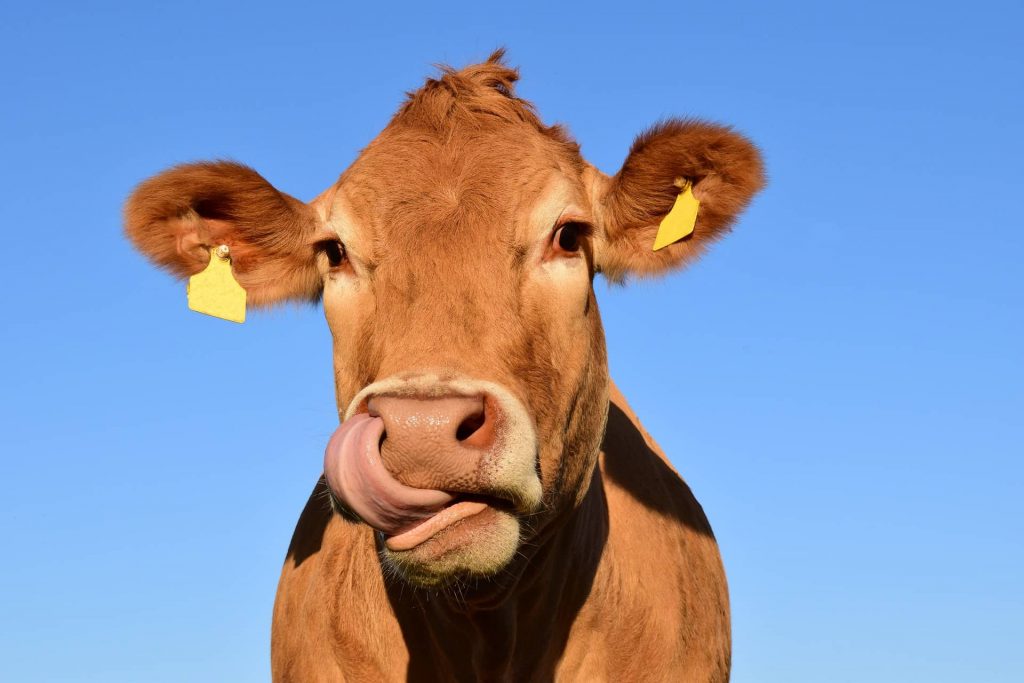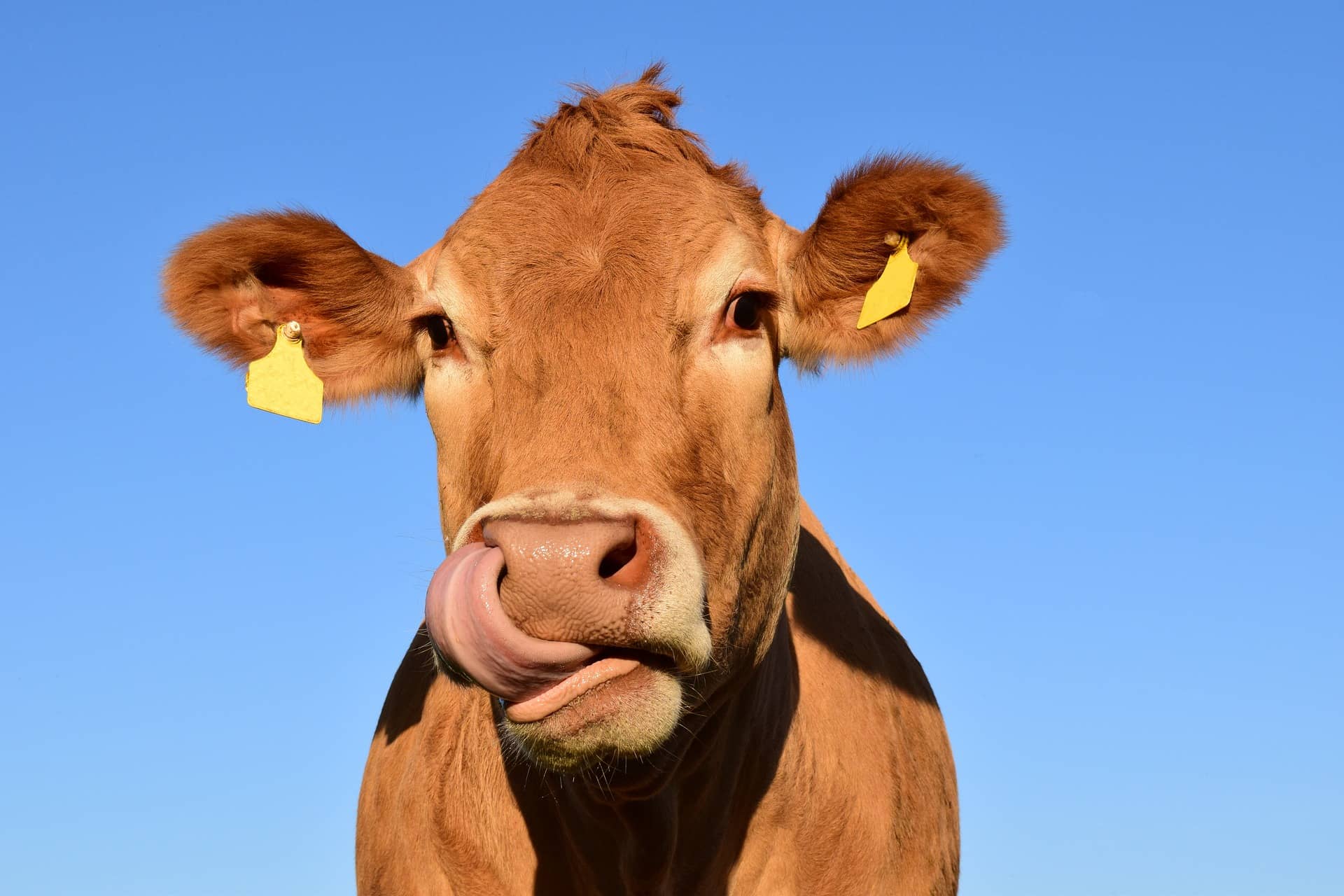Written by Christina Young and Edited by Ashima Seth

In 1986, newspaper headlines read of curious stories of domestic cows straying from their normally docile behavior and subsequently progressing to a vegetative state (a state of unconsciousness and/or inability to move), before dying [1]. Dubbed the “Mad Cow Disease,” Bovine Spongiform Encephalopathy (BSE) was an unknown and unexpected illness that hurt farming communities; the disease’s spread caused people to become wary of the ways they were treating their animals. BSE was later found to be an actual wasting disease and was classified under the same category as Scrapie, a similar disease in sheep that was caused by the propagation of prions. Prions are proteins with abnormal structures that cause other proteins to become abnormally shaped or “misfolded” as well; these misfolded proteins are unable to perform their proper functions [2,3].
Proteins are large organic compounds that are essential to cellular activity. They facilitate movement, and are an integral part of the body’s internal communication pathways. Proteins are made of long chains of both positively and negatively charged molecules that interact with each other to form a compact structure that has a specific cellular function [4]. In proteins, two main kinds of compaction or folding can occur — one being alpha helices which look like coiled springs, and the other being beta sheets which resemble pleated sheets. Each folding pattern changes the properties and function of the protein in unexpected ways, allowing the protein to interact uniquely with a variety of substances, and consequently perform specific actions. Prions are misfolded proteins, formed when large regions of naturally-occurring alpha helices are replaced with parallel beta sheets [3]. Prions induce other proteins to misfold and potentially accumulate in deposits throughout the body, negatively affecting cellular function. Most prion diseases originate from a single misfolded protein, as evidenced by analysis of infected cells across many species, including humans. Although it is known that prion diseases can spread through the ingestion of infected meat, many other aspects of prions remain unknown, such as the method by which they induce changes in proteins with normal shape and function [5].
Prion diseases infect animals, as in the case of Mad Cow Disease and Scrapie, and humans, as in the case of Creutzfeldt–Jakob Disease (CJD). All prion diseases are characterized by a gradual loss of motor skills and neurodegeneration, which is the decrease in cellular function and death of brain cells due to a lack of necessary nutrients [3]. As the mechanism of infection remains a mystery, the cure to prion diseases continues to evade us. Nevertheless, researchers have continued to study prions. In Japan, scientists have recently taken a different approach, not searching for a cure as much as developing a test to identify how effective unusual strains of BSE prions are in infecting other species, and to locate where they will accumulate in the body. The Sawada lab used the Real-Time Quaking Induced Conversion Assay (RT-QuIA), a process that evaluates two unusual strains of BSE in bovine tissue by monitoring the signals of marked prions as they move within a body, to determine the locations of the abnormal protein buildup. They also used RT-QuIA to analyze how quickly and effectively the unusual strains of prions would infect cells of different species, as compared to the conventional strain. In their work, the researchers found that the two strains of prions were more effective in infecting cells of different species than the conventional strain. The prions of the unusual strains deposit themselves within the brain and glands of the endocrine (hormonal) system, leading to complications in motor function and communication between cells [6].
Thanks to the regulations on food in first-world countries, the number of BSE cases has significantly decreased since the late 1900s; however, prion diseases remain a public health issue, not just because of possible human infection, but also within the context of the humane treatment and care of domestic animals [1,5]. With the identification of these unusual strains as having greater infectivity, as demonstrated by the Sawada lab, the possibility of cross-species infection has risen, prompting caution and necessitating greater awareness of prion diseases [6].
References:
- “Mad Cow Disease Fast Facts.” CNN Health, (2018). https://www.cnn.com/2013/07/02/health/mad-cow-disease-fast-facts/index.html
- “Bovine Spongiform Encephalopathy.” Centers for Disease Control and Prevention. https://www.cdc.gov/prions/bse/index.html
- Zabel, M.D., Reid, C. (2015) A brief history on prions. Pathogens and Disease. 73. doi: 10.1093/femspd/ftv087
- “What are proteins and what do they do?” NIH Genetics Home Reference, (2019). https://ghr.nlm.nih.gov/primer/howgeneswork/protein
- Houston, F., Andreoletti, O. (2018). Animal prion diseases: the risks to human health. Brain Pathology. 29:248-262.
- Sawada, K., Suzuki, A., Yamasaki, T., Iwamaru, Y., Matsuura, Y., Miyazawa, K., Masujin, K., Atarashi, R., Horiuchi, M. (2019). Estimation of prion infectivity in tissues of cattle infected with atypical BSE by real time-quaking induced conversion assay. J-Stage Journal of Veterinary Medical Science. 12. doi:10.1292/jvms.19-0003
